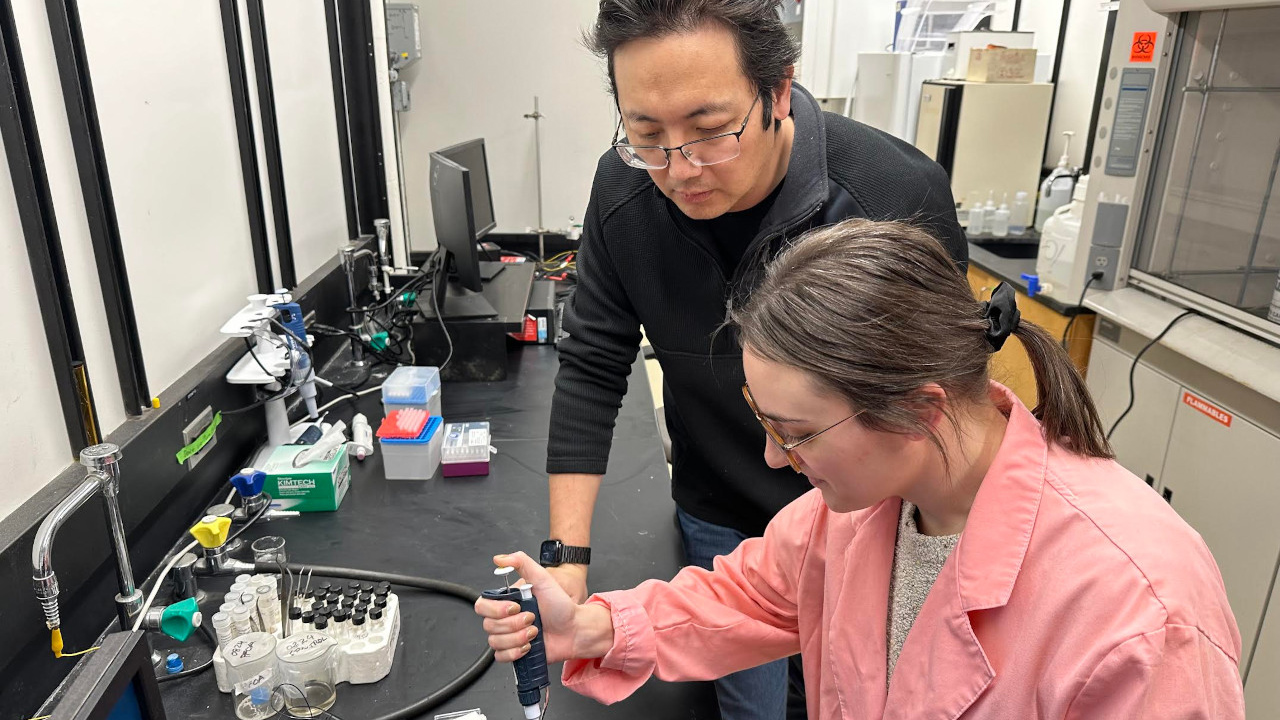OU chemistry professor developing low-cost opioid detection device for law enforcement

Oakland University Assistant Professor of Chemistry Zhe Wang is helping combat the opioid crisis and protect law enforcement officers with his project, “Development of a Low-Cost, Portable, Rapid Opioid Detection Tool for Enhanced Field Decision-Making,” which just received a $300,000 grant from the Department of Justice.
“I think as a chemist, our first priority is to develop new technology that can really benefit society and benefit the community,” Wang said. “That helps drive our research. We chose opioid drugs as our primary research focus because this is a severe crisis in the United States. I think it’s our duty as scientists to help solve this problem.”
The goal of Wang’s project is to develop a low-cost device for law enforcement officers to use in the field to detect opioids.
“Currently today, law enforcement officers check substances by using a very expensive device and it’s just a yes or no device, not a confirmation device,” Wang said.
Because the current device is very expensive, not every law enforcement officer is able to carry one. Wang hopes all officers can have one of his low-cost devices available to them.
“We got the idea from the glucose sensors, which are very cheap and everybody can carry one and monitor their glucose level,” Wang said. “We wanted to develop that kind of cheap, quick and accurate device.”
“We interviewed the law enforcement workers and the forensic scientists and they said most of the police officers don’t want to touch the unknown substances and it’s a high risk for them. So we want to develop this device so every police officer can carry it in their car and they can conduct this measurement in the field.”
The device also allows officers to test unknown packages without having to touch them.
“We’ve designed a probe so the police officer can pluck into the unknown package to determine what’s inside,” Wang said. “We can give them confirmation numbers, what kind of opioid drug it is and what’s the concentration before they take the next step.
The grant from the Department of Justice provides $300,000 to cover the two-year project period. Wang’s lab includes undergraduate student Christopher Alexopoulos and graduate student Erin Witherspoon, who have been assisting Wang with the development of the device.
“Our lab is very productive,” Wang said. “We tried for this grant two years ago, but didn’t get it. They gave us some very good feedback and during the revision time we learned a lot. I’m very happy we can continue this research because I think it will really contribute to helping solve the opioid crisis.”
“This project is a two-part project, one part is chemistry, where we study the fabric sensor interface and use our innovative method, and the second-part is after we assemble the sensor, we will bring our sensor to the MSU forensic lab to conduct the field test,” Wang said.
Wang said they have focused on fentanyl, but he hopes to expand to other drugs in the future.

 January 10, 2024
January 10, 2024







